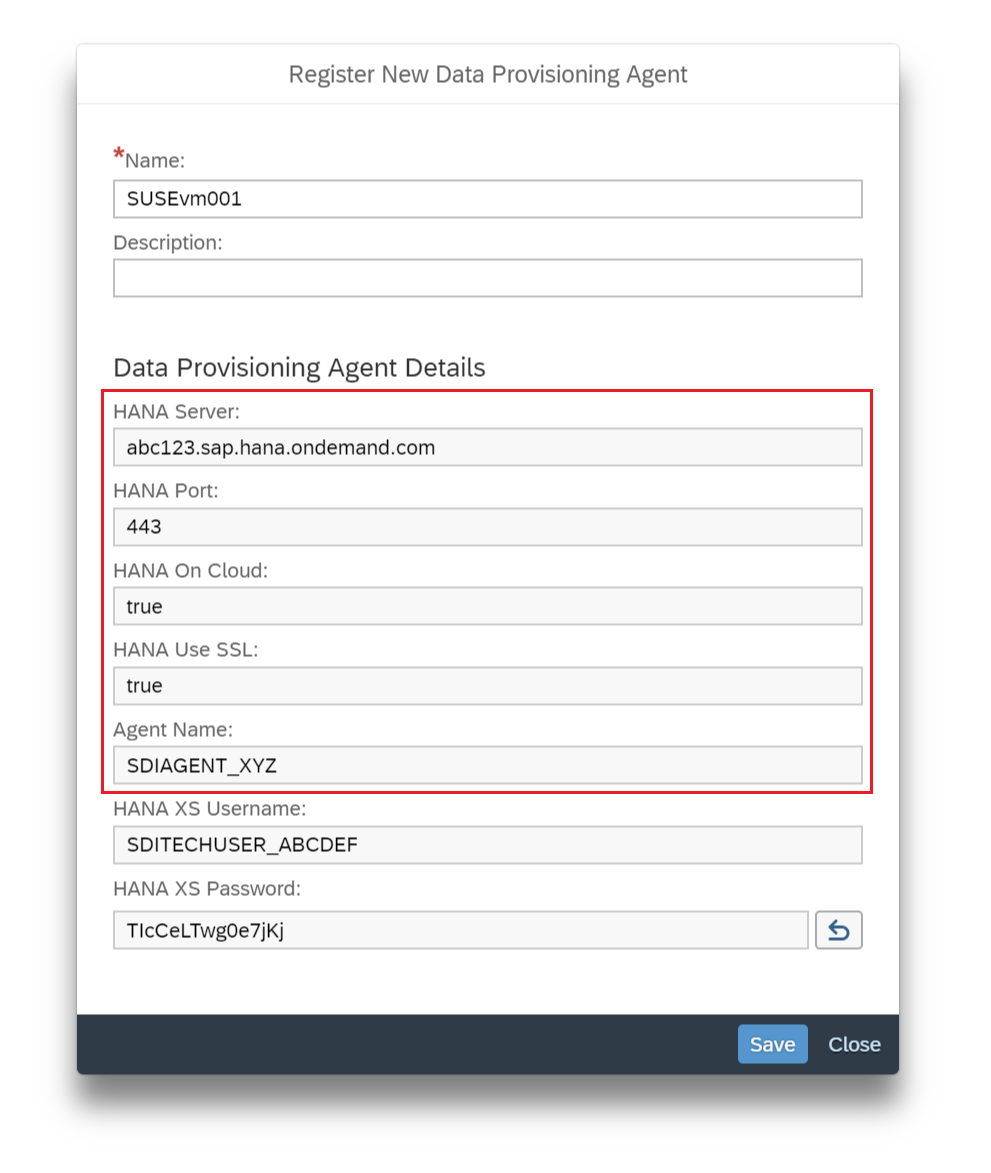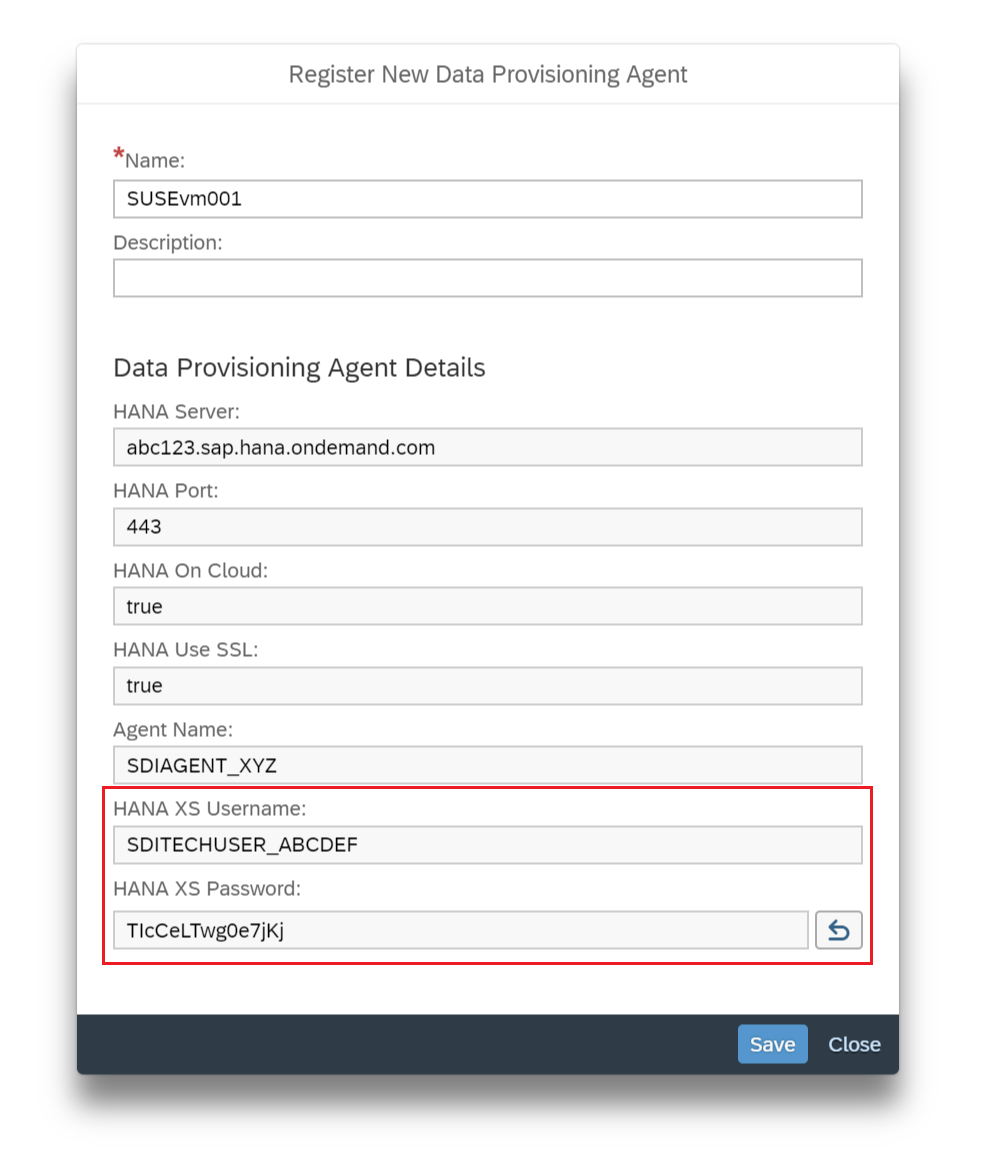SDI-Based Blending Between SAP BW Live Data Models and Import Data Models
You can enable blending between a primary SAP BW live data model, and import data models. The actual blending of data sets is always performed in the SAP HANA database belonging to the SAP Analytics Cloud system.
The following setup and configuration steps must be performed by the administrator for the SAP HANA system that your BW or BW/4HANA system is running on, and an administrator for SAP Analytics Cloud. These steps are typically not performed by one person alone; therefore, it is recommended that you make a plan with your SAP HANA and SAP Analytics Cloud system administrators before proceeding with the steps below.
Ensure that your SAP BW system is on a compatible version that is required for data blending
Apply all required SAP Notes. Refer to the following SAP Note first to check the compatible versions of SAP BW that SAP Analytics Cloud supports. Execute the steps described in the SAP Note to determine the required notes that must be implemented in your BW system to enable SAP Analytics Cloud to work seamlessly with BW Live connections:
Then, refer to the following SAP Note for specific requirements for enabling data blending with your SAP BW system. It is important that this step be performed after the steps described in the above note.
Ensure that your SAP HANA system is on a compatible version supported by SAP BW
Refer to the following SAP Notes for the versions of SAP HANA that are compatible with SAP BW. It is also recommended to check the compatible versions of SAP BW that SAP Analytics Cloud supports:
Install the SAP Data Provisioning Agent
SAP Analytics Cloud leverages the use of SAP HANA Smart Data Integration (SDI) to enable blending with SAP BW data. You must have the SAP Data Provisioning Agent installed on a Windows or Linux host from which it can establish HTTPS connections to SAP Analytics Cloud and the SAP HANA system your SAP BW deployment is running on.
The version of the Data Provisioning Agent required for your SAP HANA system can be determined by checking the Product Availability Matrix.
For information on installing the agent, see Installing the SAP Data Provisioning Agent. The following steps must be performed during the agent installation:
- Data Provisioning Agent Planning and Preparation.
- Install the Data Provisioning Agent.
Afterward, proceed with creating a table in your SAP HANA system.
Create a table in your SAP HANA system
Using SAP HANA studio, create the REMOTE_OBJECTS table on your on-premise SAP HANA system. This table is used by SAP Analytics Cloud to temporarily store data results required for a blend via the agent connection.
- In case the SAP HANA system your SAP BW deployment is running on has a full license, perform
the following steps:
-
Create a user for administering this table. This user will also be used in SAP Analytics Cloud for creating the connection.
CREATE USER SDI_ADMIN PASSWORD <admin_password> NO FORCE_FIRST_PASSWORD_CHANGE; ALTER USER SDI_ADMIN DISABLE PASSWORD LIFETIME
The remaining steps for setting up your on-premise system must be done with the SDI_ADMIN user.
- Create the REMOTE_OBJECTS
table.
CREATE COLUMN TABLE "SDI_ADMIN"."EHS_REMOTE_OBJECTS" (ID VARCHAR(100), TYPE VARCHAR(50), INSERT_TIME TIMESTAMP, SEQ INTEGER, EXPIRE_TIME TIMESTAMP, OBJECT VARBINARY(5000), PRIMARY KEY (ID, TYPE, INSERT_TIME, SEQ));
-
Set permissions for the REMOTE_OBJECTS table, which allow for storage and access to the temporary cache data during data blending scenarios.
Assign the ABAP communication user via the HANA studio - this is the user with whom ABAP accesses the HANA database - under "Object Privileges" the schema "SDI_ADMIN" with DELETE, INSERT, SELECT permission and granted to others "no Grant"
-
-
In case the SAP HANA system your SAP BW deployment is running on does not have a full license (for example, Runtime Edition (REAB)), perform the following steps:
-
Create a user for administering this table. This user will also be used in SAP Analytics Cloud for creating the connection.
CREATE USER SDI_ADMIN PASSWORD <admin_password> NO FORCE_FIRST_PASSWORD_CHANGE; ALTER USER SDI_ADMIN DISABLE PASSWORD LIFETIME
The remaining steps for setting up your on-premise system must be done with the SDI_ADMIN user.
-
Assign the ABAP communication user via the HANA studio - this is the user with whom ABAP accesses the HANA database - under "Object Privileges" the schema " SDI_ADMIN" with CREATE ANY, DELETE, INSERT, SELECT permission and granted to others "no Grant".
-
Create the REMOTE_OBJECTS table by executing the ABAP report RS_BICS_INA_BLE_SETUP (Software Component: DW4CORE note 2806650
 and SAP_BW note
2806682
and SAP_BW note
2806682  ) via SE38 transaction. Enter the
schema " SDI_ADMIN" and the table name “EHS_REMOTE_OBJECTS”.
) via SE38 transaction. Enter the
schema " SDI_ADMIN" and the table name “EHS_REMOTE_OBJECTS”. -
For security reasons, you can deselect the flag for CREATE ANY.
-
Configure and register the SAP Data Provisioning Agent
- Register the Data Provisioning Agent with SAP Analytics Cloud:
- Log onto SAP Analytics Cloud and go to .
- Scroll down to the SAP HANA Smart Data Integration section, and select Register New Data Provisioning Agent.
- In the dialog, enter a unique name for your new agent registration.
NoteThe registration name cannot be changed later.
- (Optional) Provide a description for your new agent registration.
- Select Save before proceeding.NoteYou will need the information presented in the Data Provisioning Agent dialog for step 2. Either keep the dialog box open, or note the information provided and give it to the SAP HANA administrator who will perform step 2.
- Create a connection between the agent and your on-premise SAP HANA system.
Perform the following steps in the SAP Data Provisioning Agent.
Note<DPAgent_root> is the directory where the DP agent was installed. By default, on Windows, this is C:\usr\sap\dataprovagent, and on Linux it is /usr/sap/dataprovagent.
-
Configure dpagentconfig.ini:
In the directory where the agent was installed, open <DPAgent_root>/dpagentconfig.ini, and edit the following lines. Use the values provided by the Register New Data Provisioning Agent dialog from step 1.b. The required values are listed under Data Provisioning Agent Details.

agent.name=(<AgentName>) hana.onCloud=true hana.server=(<HANA_Server>) hana.port=(<HANA_Port>) hana.useSSL=true
Note<HANA_Server> is the server IP address or hostname. <HANA_Port> is the HTTP port.If you need a proxy to access the internet due to a corporate firewall, you must also set the following lines:
cloud.useProxy=true proxyHost=<proxy_hostname> proxyPort=<proxy_port>
NoteThe proxy must be able to handle HTTP long polling. Using a proxy may have a performance impact on blending. - Save the changes made to dpagentconfig.ini.
- Open an Administrator prompt on the Windows or Linux host where the DP
agent is installed, and run the following commands:
- Set the environment variable.
On Linux:
export DPA_INSTANCE=<DPAgent_root>
On Windows:
set DPA_INSTANCE=<DPAgent_root>
- Start the Data Provisioning Agent.
On Linux:
<DPAgent_root>/bin/agentcli.sh --configAgent
On Windows:
<DPAgent_root>/bin/agentcli.bat --configAgent
You must start the agent, if it has not been started already: Select option 2. Start or Stop Agent, and then option 1. Start Agent.
Select q. Quit to exit the script.
This pattern of stopping and then starting the agent is required whenever you make a configuration change to the agent.
- Set the credentials for the HANA XS user.
On Linux:
<DPAgent_root>/bin/agentcli.sh --setSecureProperty
On Windows:
<DPAgent_root>/bin/agentcli.bat --setSecureProperty
Select option 1. HANA XS Username.
Enter the username presented in the Register New Data Provisioning Agent dialog from step 1.b.
2. HANA XS Password.
Enter the password presented in the Register New Data Provisioning Agent dialog from step 1.b.
 Note
NoteIf you have closed and reopened the Register New Data Provisioning Agent dialog from step 2.b, and the password field is empty, you can click the
 button next to the password box to generate a new
password.
button next to the password box to generate a new
password.When you click the Save button, the new password is saved to SAP Analytics Cloud and is ready to be used.
Select q. Quit to exit the script.
- Restart the SAP Data Provisioning Agent.
On Linux:
<DPAgent_root>/bin/agentcli.sh --configAgent
On Windows:
<DPAgent_root>/bin/agentcli.bat --configAgent
Select option 2. Start or Stop Agent, and then option 2. Stop AgentSelect to stop the agent.
Select option 1. Start Agent to start the agent.
Select option 1. Agent Status to check the connection status.
If the connection succeeded, you should see Agent connected to HANA: Yes.
Select q. Quit to exit the script.
You can now close the agent registration dialog from step 1.
- Set the environment variable.
-
- Connect SAP Analytics Cloud to the
on-premise SAP HANA system your SAP BW deployment is running on.
- Log on to SAP Analytics Cloud and go to .
- Under SAP HANA Smart Data Integration, select Add New Remote Source.
- In the Add New Remote Source dialog, provide a name for your SAP HANA system.
- Provide the fully qualified domain name of your SAP HANA system.
- Provide the SQL port of your SAP HANA system.
- Provide the schema and table name of the REMOTE_OBJECTS table you created.
- If you want to enable SSL encryption between your remote source and the SAP Data Provisioning Agent, select the Use encryption and Validate certificate check boxes.
- Provide the credentials for the SDI_ADMIN user that created the REMOTE_OBJECTS table.
- Select Save.
- Associate an existing live data connection with your SAP BW on HANA or SAP BW/4HANA
system.NoteThe live data connection you select must be the SAP BW system that you're blending data from.
- Click Add Live Data Connection on the remote source created in step 3.
- In the drop-down box, select the appropriate SAP BW live data connection.
- Click Save.
For information about installing the agent, see Installing the SAP Data Provisioning Agent.
Troubleshooting Data Provisioning Agent errors
If you encounter problems with the Data Provisioning Agent, it can be helpful to examine the logs located in the <DPAgent_root>/log directory.
-
Please ensure that your data provisioning agent is connected to HANA.
- Run <DPAgent_root>/bin/agentcli.bat --configAgent.
- Select option 1. Agent Status to check the connection status.
- Make sure the output shows Agent connected to HANA: Yes.
- If the output doesn't show that the agent is connected, it may show an error message. Resolve the error, and then select option 2. Start or Stop Agent, and then option 1. Start Agent to start the agent.
-
Failed to connect to the remote source. Please restart your data provisioning agent and try again.
- Run <DPAgent_root>/bin/agentcli.bat --configAgent.
- Select option 2. Start or Stop Agent2. Stop Agent to stop the agent, and then option 1. Start Agent to start the agent.

 (Main
Menu)
(Main
Menu)
 System
System Administration
Administration